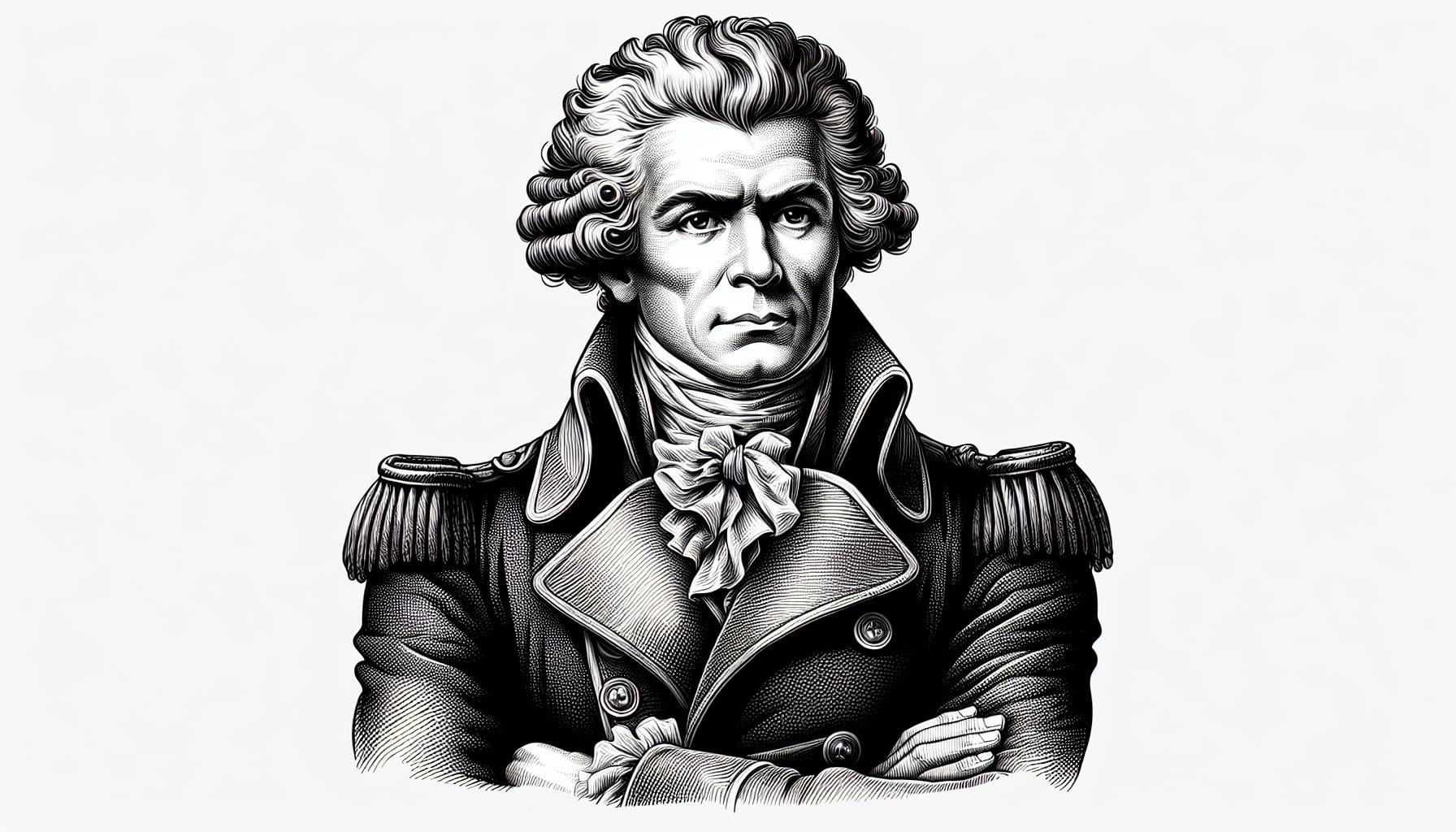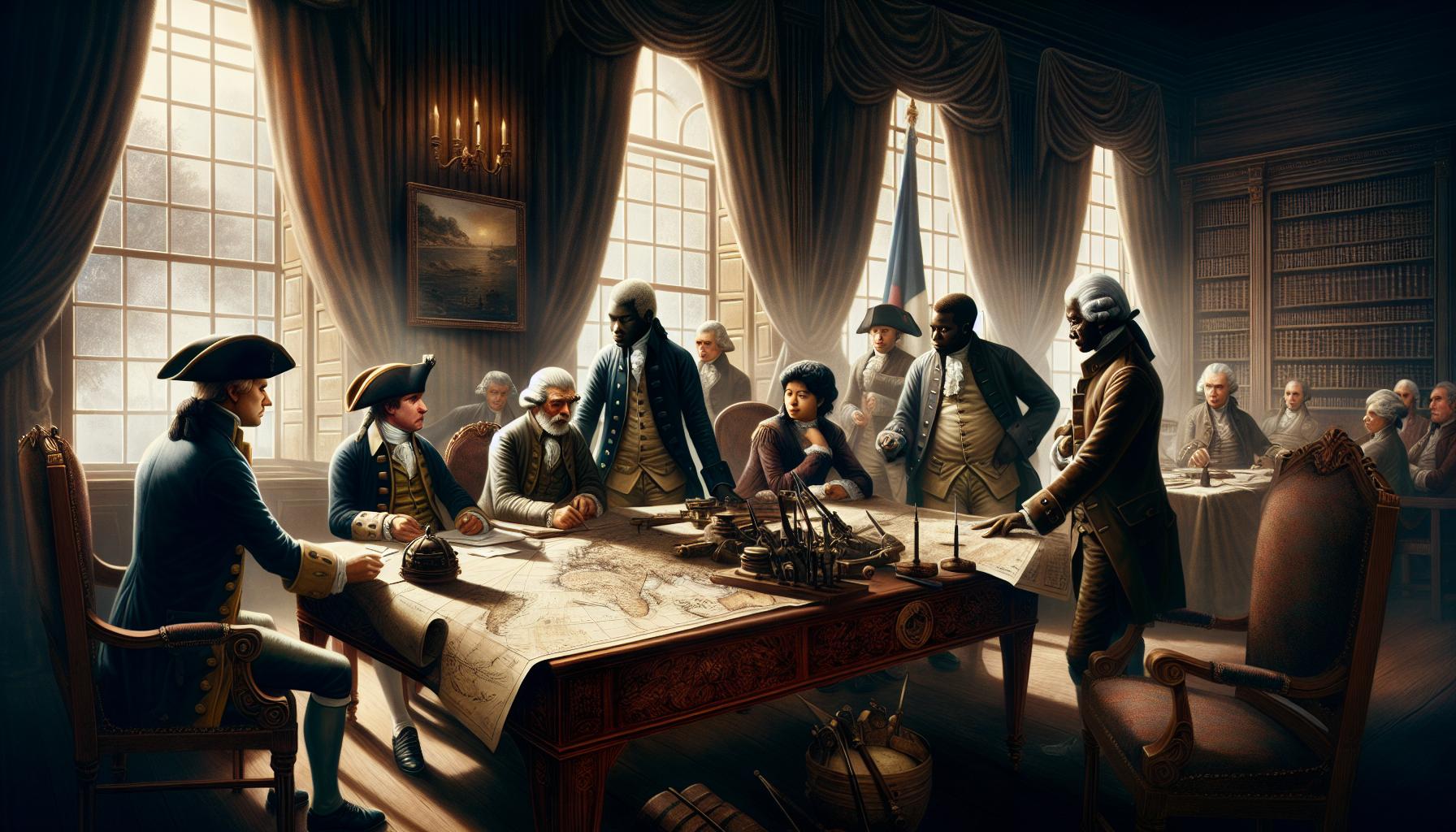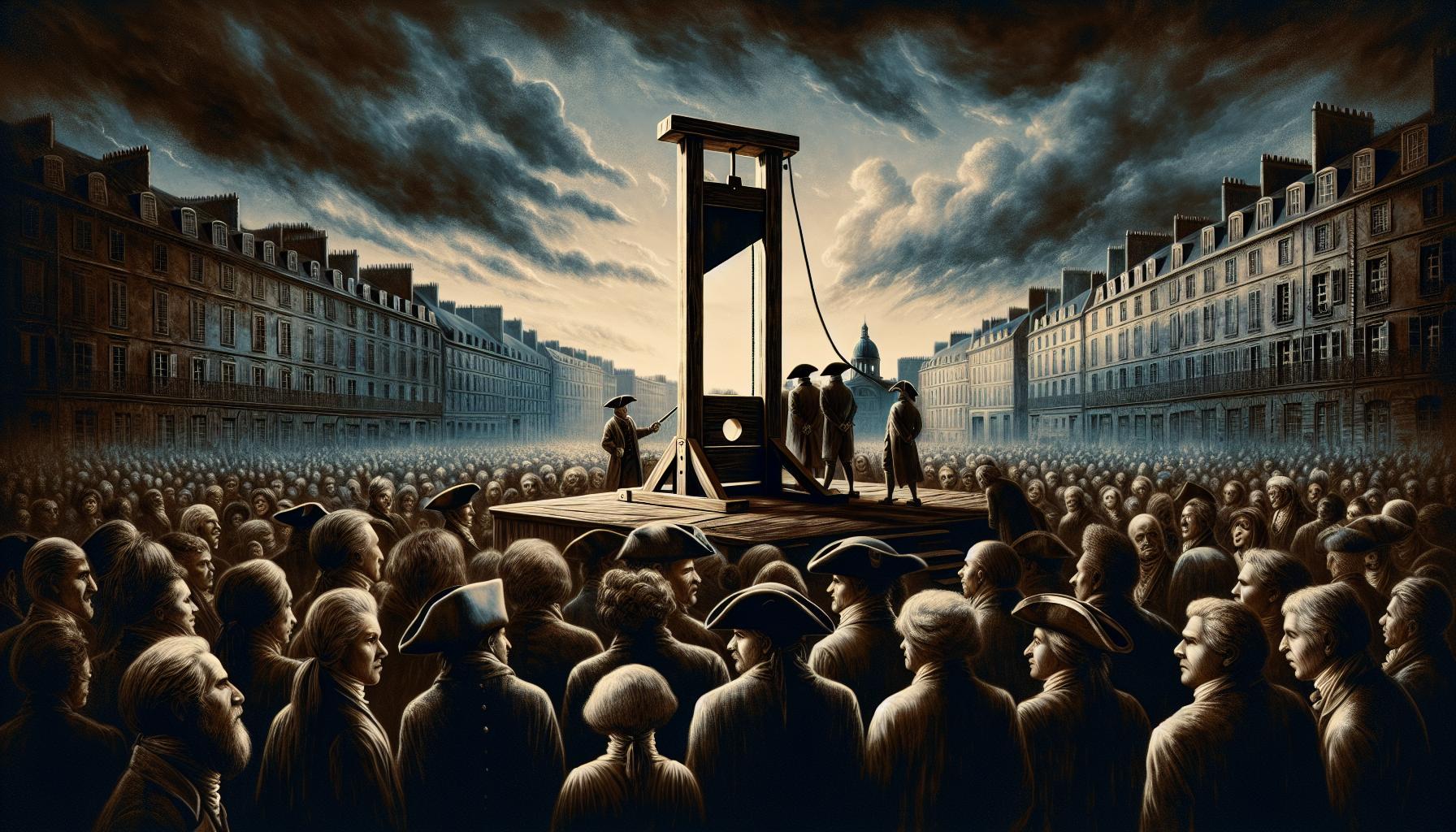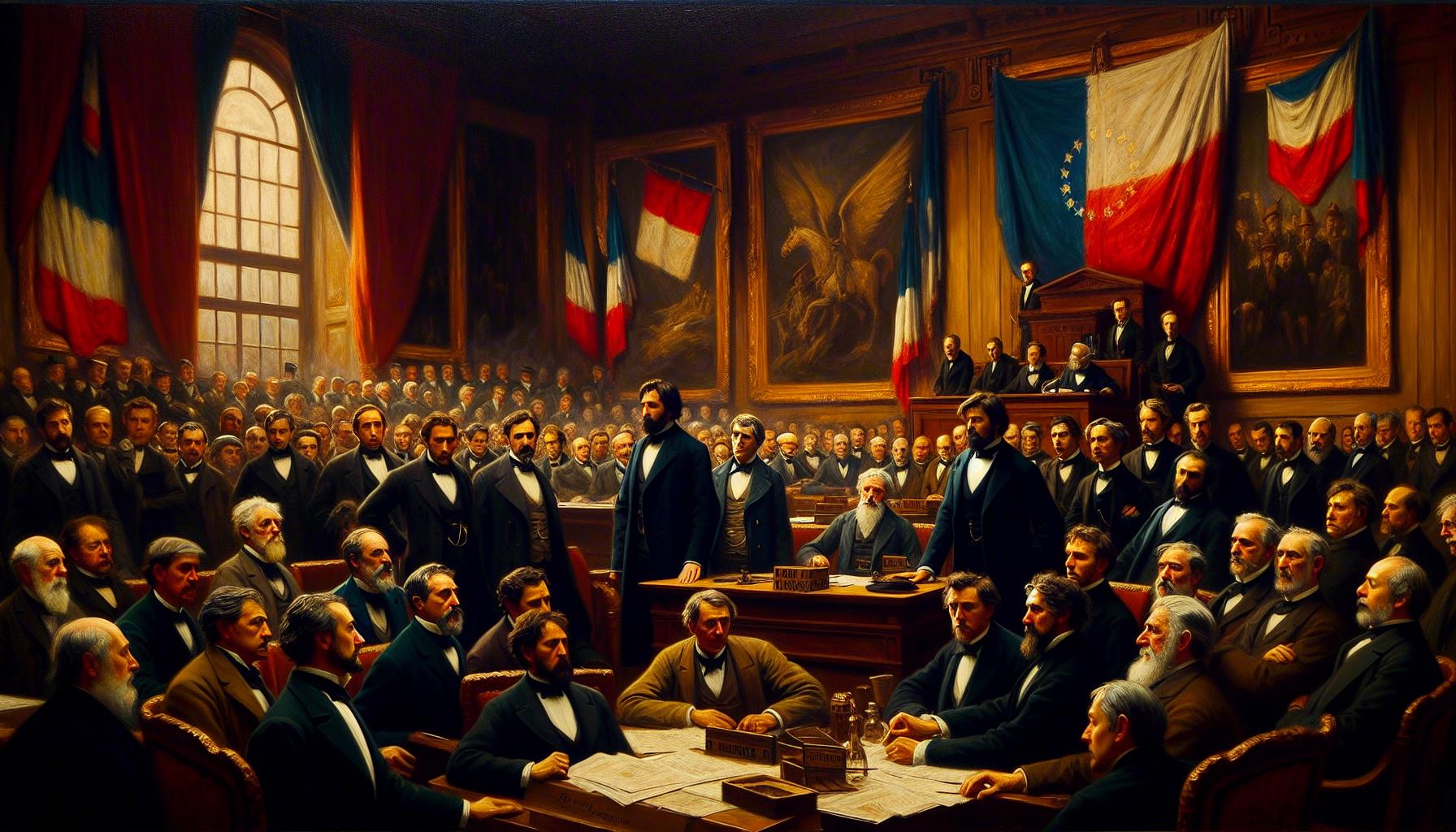When I first came across the Committee of Public Safety, it struck me as one of the most intriguing and controversial entities in history. Born during the French Revolution, this powerful group played a pivotal role in shaping the course of a nation in chaos. Its name might suggest a focus on protection and order, but its legacy is far more complex and, at times, chilling.
The Committee wasn’t just about safeguarding public welfare—it became a central force in navigating the turbulent political landscape of revolutionary France. From managing wars to enforcing radical policies, it wielded immense authority. But with great power came great scrutiny, and its actions still spark debates today. Understanding this committee is key to grasping how revolutions can shape governments and societies in ways that are both inspiring and cautionary.
Origins Of The Committee Of Public Safety
The Committee of Public Safety emerged during the French Revolution as a response to internal unrest and external threats. Its formation was deeply rooted in the political upheaval of late 18th-century France.
Political Context In Revolutionary France
Revolutionary France faced domestic instability and foreign aggression after the monarchy’s collapse in 1792. Internal dissent from royalists, clergy, and moderates complicated the new Republic’s efforts to maintain order. Simultaneously, France engaged in wars with European coalitions aiming to restore monarchy. This dual crisis created an environment where extraordinary measures gained support to safeguard the revolution.
Founding And Initial Purpose
The National Convention established the Committee of Public Safety on April 6, 1793, to address military, political, and social threats. Its original purpose focused on ensuring swift decision-making and managing national defense amidst external war and internal rebellion. Initially comprising nine members, it functioned as an executive body subordinate to the Convention, prioritizing collective security over individual liberties.
Key Members And Leadership

The Committee of Public Safety operated under the guidance of influential members who defined its policies and actions. Its leadership structure evolved as political and social pressures intensified during the French Revolution.
Prominent Figures In The Committee
Several key figures shaped the committee’s decisions. Georges Danton, one of its early members, emphasized diplomacy and controlled radicalism in 1793. Lazare Carnot, often called the “Organizer of Victory,” oversaw military strategies that strengthened the Republic’s armies. Bertrand Barère contributed to propaganda and speeches supporting revolutionary ideals. Jean-Marie Collot d’Herbois and Jacques Hébert, representing radical elements, played roles in enforcing revolutionary justice.
By mid-1793, more radical members came to dominate the committee. They endorsed policies like the Reign of Terror to counter perceived internal and external threats to the Republic.
Role Of Maximilien Robespierre
Maximilien Robespierre became the committee’s most prominent and controversial leader from July 1793. Representing the Jacobin faction, he supported centralized authority to achieve revolutionary goals. Under his direction, the committee expanded the scope of the Reign of Terror, targeting counter-revolutionaries and dissenters.
Robespierre’s leadership focused on moral virtue and republican principles. However, his insistence on ideological purity intensified factionalism. His dominance in the committee ended abruptly in July 1794 when his arrest and execution marked the fall of the Jacobin political agenda.
Responsibilities And Powers

The Committee of Public Safety wielded significant authority during the French Revolution, balancing legislative, executive, and judicial roles. Its powers expanded rapidly in response to wartime pressures and domestic instability.
Legislative And Executive Authority
I observed that the committee held both legislative and executive powers, enabling it to legislate decrees and oversee their enforcement. It issued directives on governance, economic controls, and military operations to address threats against the Republic. For example, it oversaw the Levee en Masse in August 1793, a policy that mobilized all citizens for the war effort. Members such as Lazare Carnot directed military strategies, ensuring coordination across fronts. The committee’s role surpassed local administrative bodies, centralizing decision-making for efficiency.
Relationship With Other Revolutionary Bodies
The committee frequently interacted with revolutionary bodies like the National Convention, the Revolutionary Tribunal, and local Jacobin clubs. Its authority depended on the Convention, which theoretically retained oversight but often allowed the committee broad autonomy. For instance, the committee leveraged its ties with the Revolutionary Tribunal to intensify the Reign of Terror, targeting accused counter-revolutionaries. It also influenced the Sans-Culottes by aligning policies with radical demands, strengthening its public reach. Coordination was marked by tension, especially as factional divisions within the Convention grew.
Actions And Policies

The Committee of Public Safety implemented policies aimed at securing revolutionary France from internal and external threats. Its actions often reflected the heightened urgency of the period.
Implementation Of The Reign Of Terror
The committee enforced the Reign of Terror to suppress counter-revolutionary activity. Under Robespierre’s leadership, it sanctioned mass arrests and executions targeting perceived enemies of the Republic, including former nobility, clergy, and moderates. The Revolutionary Tribunal expedited trials, with over 16,000 individuals executed by guillotine between 1793 and 1794. Surveillance committees monitored citizens, fostering widespread fear to maintain loyalty and obedience.
This campaign centralized authority, enabling decisive action but exacerbating political tensions. Radicalization drove policies like the Law of Suspects (1793), which broadened definitions of dissent, leading to arbitrary detentions and silencing of political opposition.
Measures For National Security And War Effort
The committee bolstered national security by mobilizing resources and citizens for defense. The Levee en Masse decree, issued in August 1793, conscripted all able-bodied men for military service while assigning women, children, and the elderly to supportive roles, such as producing uniforms and weapons. This strategy expanded the French army to over 1,000,000 soldiers by 1794, enabling significant victories against European coalitions.
To finance the war effort, economic controls regulated prices and requisitioned goods. The Maximum Price Law ensured affordable grain supplies for the population while supporting military provisioning. Strong oversight of commanders, directed by Carnot, streamlined military operations and ensured battlefield accountability. These measures fortified France against foreign invasions, stabilizing internal governance amid revolutionary turmoil.
Legacy And Historical Impact

The Committee of Public Safety left a lasting mark on both the French Revolution and subsequent historical narratives. Its actions and policies reshaped France’s political structure and influenced discussions on governance and power.
Effect On The French Revolution
The committee redefined revolutionary governance, centralizing authority and prioritizing collective security over democratic principles. Its bold actions during the Reign of Terror eliminated monarchical loyalists, clergy, and political opponents, altering the trajectory of the Republic. By mobilizing citizens through the Levee en Masse, it transformed France into a militarized state, achieving victories against European coalitions and preserving the revolution from external threats.
These impacts, however, deepened divisions within revolutionary factions. Struggles between moderates and radicals intensified as the committee’s authority grew, exemplifying the fragile balance between maintaining security and suppressing dissent. The temporary suppression of factionalism under Robespierre’s leadership collapsed following his fall, leading to greater instability and the eventual dissolution of revolutionary initiatives post-1794.
Perspectives On Its Controversial Role
The committee’s centralized power and use of extreme measures generated polarized viewpoints. Some historians recognize its contributions to France’s military successes and revolutionary ideals, highlighting gains like national independence and social equity efforts. Others critique its authoritarian practices, emphasizing the mass executions, fear-driven policies, and erosion of civil liberties under the Reign of Terror.
Public memory often associates the committee with Robespierre, viewing him as either a guardian of revolutionary ideals or a dictator enforcing tyranny. This duality continues to shape debates on revolutionary governance models, illustrating the ethical dilemmas surrounding security and freedom. The committee’s controversial legacy thus provides critical insights into the challenges of implementing political change amidst upheaval.
Conclusion
The Committee of Public Safety remains a powerful example of how revolutions can reshape governance and challenge societal norms. Its actions, marked by both achievements and controversies, reveal the complexities of balancing security with liberty during times of upheaval. While its legacy continues to spark debate, it undeniably left a lasting imprint on the history of revolutionary France and the broader discourse on political power and responsibility.
Frequently Asked Questions
What was the Committee of Public Safety?
The Committee of Public Safety was an executive body established during the French Revolution in 1793 by the National Convention. Its primary role was to address internal and external threats to the Republic by overseeing military efforts, enforcing revolutionary policies, and maintaining order during a period of political instability.
Why was the Committee of Public Safety created?
The committee was created to protect the newly formed Republic amidst domestic unrest and foreign invasions after the monarchy’s collapse in 1792. It was intended to make swift decisions on national defense, governance, and revolutionary policies during this chaotic period.
Who were the key members of the Committee of Public Safety?
Key members included Georges Danton, who advocated for diplomacy; Lazare Carnot, known for his military strategies; Bertrand Barère, who led propaganda efforts; and Maximilien Robespierre, a leading Jacobin who expanded the Reign of Terror to protect revolutionary ideals.
What role did Maximilien Robespierre play in the committee?
Robespierre, from July 1793, became the committee’s most prominent leader. He centralized its authority, championed moral virtue and republican ideals, and intensified the Reign of Terror, leading to mass arrests and executions of perceived enemies of the Republic.
How did the Committee of Public Safety enforce the Reign of Terror?
The committee sanctioned mass arrests and executions under the Law of Suspects, targeting counter-revolutionaries and dissenters. It used surveillance committees to identify threats and fostered fear to maintain loyalty to the revolutionary government.
What was the Levee en Masse policy?
The Levee en Masse was a conscription policy initiated by the committee, mobilizing all citizens for the war effort. Able-bodied men joined the military, while women, children, and elders contributed to support roles, significantly boosting the French army’s strength.
How did the committee stabilize France during wartime?
The committee implemented economic controls, such as the Maximum Price Law, to regulate food and supply prices. It requisitioned goods to finance war efforts and enforced policies to mobilize citizens, ensuring both military success and internal stability.
Why is the Committee of Public Safety controversial?
The committee is controversial due to its dual legacy: while it achieved military victories and defended revolutionary ideals, its authoritarian practices, including mass executions and suppression of freedoms during the Reign of Terror, are heavily criticized.
What caused the decline of the Committee of Public Safety?
The committee’s power waned in 1794 after Robespierre’s arrest and execution, which ended its dominance. Internal divisions, growing public resentment, and opposition to its extreme measures contributed to its decline.
What is the historical legacy of the Committee of Public Safety?
The committee redefined governance by centralizing power during a revolutionary period. It remains a subject of debate, with some praising its success in defending the Republic and others condemning its authoritarianism and erosion of civil liberties during the Reign of Terror.

